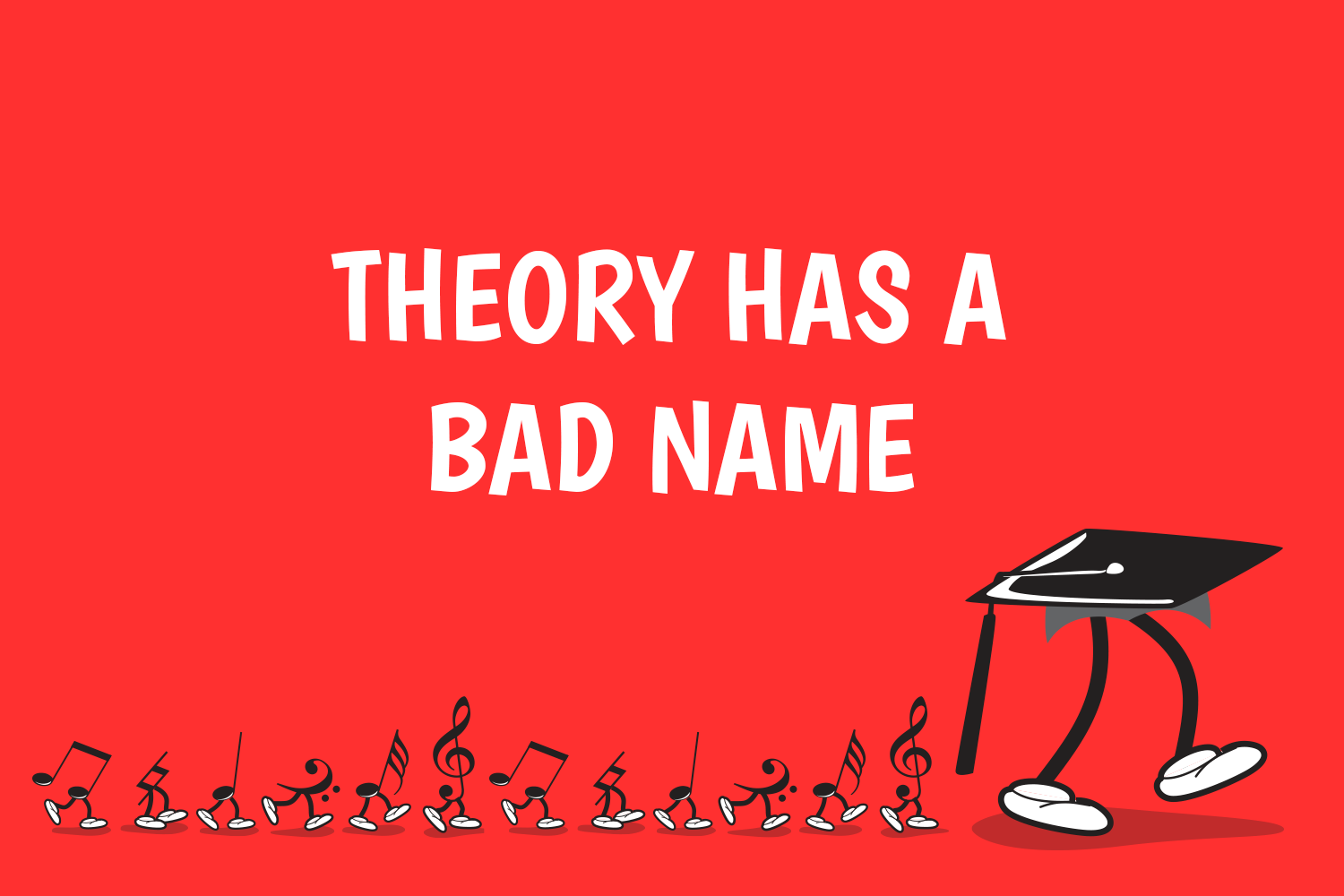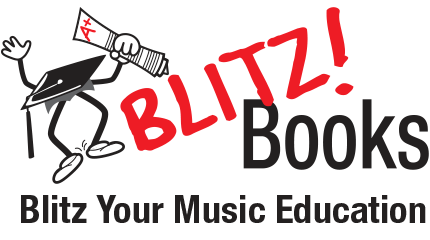Theory Has a Bad Name

Vicious Cycle
The vicious cycle of theory study goes like this:
Student dislikes theory because all their friends do or because they ‘just want to play’ => student avoids theory => student does not do well at theory => student dislikes theory
How did this happen?
I believe the main reason this cycle comes about is because we rush through theory. Very often, as soon as the practical exam is over, the piano books are put away and it’s THEORY TIME! The whole lesson is devoted to that sorely neglected theory workbook, which hasn’t seen the light of day for 4 or 5 months, in a frenzied effort to acquire the bare essentials needed to pass the all-important prerequisite exam. Let’s face it, students usually only do theory because they have to. Apart from the odd mature-age student who takes up theory just for the fun of it, completely divorced from any practical instrument study, it’s usually a race against the clock to get everything done and it’s hardly ever much fun.
How can we break the cycle?
Breaking the cycle means finding a way to teach so that students don’t feel completely abandoned when it comes to theory. There are three issues here:
- How to get the most understanding from the lesson time available;
- How to instil a sensible ‘practise’ routine when it comes to theory;
- How to love it and have fun!
The only answer is to create an approach in the lesson that draws everything from the music the student is playing, and to engage their interest and understanding through the use of their instrument. You are not just their piano teacher, you are their music teacher.
Theory is a subject in itself
Imagine you have a little piano student named Sally who gets dropped off for her lesson one day by her Mum. As you greet them at the door the mum hands you a trumpet and says “We’ve decided we’d like Sally do start doing trumpet exams too, but we can’t afford to pay for any extra lessons, so can you please just cover it in this lesson time?”
Let’s assume for a moment you just happened to also be a trumpet teacher. How would you approach trying to prepare Sally for a trumpet exam as well as her piano exam? You would have minimal time to spend on trumpet in the lesson, so the first thing you would do is explain to Sally’s mum that you expect a lot of practise to be done at home, and that you’ll need a lot of support from both herself and Sally in making sure this is done. In the event that Sally’s mum is a little pushy and insists that the exam be done that year, you would probably explain that you would be reluctant to enter Sally for a trumpet exam until you were very confident that she was progressing well and had a regular practise routine at home.
This is essentially what we as piano teachers are asked to do all the time. We are preparing for two exams – two subjects – in one lesson time. However, doing theory worksheets inside lesson time is just like listening to practise that should be done at home. Lesson time is the time for interaction – sound, games, movement, talking – and continuing with worksheets at home is the best way to maximise the time available.
In order to teach theory and practical successfully within one lesson, you need support from the parents, a student who understands the difficulty of what you’re trying to achieve, and a well structured lesson to ensure that no particular aspect of their musical education is ignored for long periods of time.
The Holistic Approach
There are many students who claim they never want to do any practical exams, which of course is fine; then there are those who have opted for the wonderful Piano for Leisure syllabus, which does not have any theory or musicianship prerequisites. Does this mean that these students should not understand the structure of scales, or the tonality of chords, or even how to draw clefs properly? NO! Whilst theory exams take place with pen and paper, theory itself should not be seen as purely a written subject: it is the understanding of the rudiments of music, which is based on SOUND. As music educators, we want to take a holistic approach which will help mould our piano students into well rounded musicians.
A holistic approach means one in which your piano student emerges with a wide range of music skills. These consist of performance, aural development, sight reading, improvisational and analytical skills. All of these skills are an essential part of being a good musician, and teaching these skills should not be limited solely to students doing piano or theory exams.
Use your TIME efficiently
Structuring the lesson is always about how to use that most precious of commodities: time. Since time is something we never have enough of, it’s so important to have an overall plan of how we’re going to get through the year.
Here are four essential elements to include in piano lessons, relating to T-I-M-E:
T– for Timer; whether it be a stopwatch, a little 3 minute egg timer or the clock on the microwave, everyone teacher needs to keep track of how much time is being used so as to not get bogged down.
I – for Instrument; use your instrument! A piano is more effective than a pen and paper. Use the music to point out any musical fact.
M – for Movement; play games, get your students off their chairs whenever possible. Swap places, go somewhere different in the room like the floor, use games that require some sort of movement so that they feel they are doing something different. Movement also applies to movement away from the mundane and ordinary; get some excitement into the lesson!
E – for Expectation; you must have an expectation of the student that they will do the work at home so that you can mark it either in the lesson or outside it.
Widen students’ learning
Let’s take a famous piece such as Minuet by Bach. At the time of playing such a piece a student would most likely not be studying towards a theory exam (more discussion on prerequisites). There are many interesting things to point out, such as the sequences, which will not be covered in an examination until 3rd grade. Should we wait three more years before introducing this student to the concept of sequences? Of course not! Use the correct terminology from the beginning, expose your students to all elements of music regardless of their progress in theory examinations. This sets them up well for later, and if and when they do finally study sequences in the formal Grade 3 environment, they will be quite relaxed and familiar with the concept.
The Higher Grades
It is extremely difficult to cover Grade 4 and above within the piano lesson, even given the fact that your student might be up to a 45 minute or 1 hour lesson as he/she might be doing 8th grade piano. Most of the time, extra lessons will be needed, as concepts such as harmony and melody writing need special attention, and it’s not really possible to gloss over them! However, using a timer whilst doing these subjects can be an effective tool. If you time how long you spend explaining these concepts, however, it can help to give your students some idea of how long they should spend reinforcing the concept at home, which should be at least a ratio of 1:2 to be successful.
Things no piano studio should be without
Here are some things I feel are an absolutely essential part of any piano lesson.
- A timer of some sort – clock with a second hand, stopwatch, phone… any timer will do.
- A whiteboard is fantastic because it’s so easy to rub things out. If you can get one with magnets that’s even better, it’s just more fun for the student.
- Flashcards – I believe that just about any problem can be solved with a set of flashcards. These may contain anything from notation to Italian terms to general knowledge. It’s a fun way of getting information across.
Hopefully by implementing all or most or even just some of the above, theory’s bad reputation can not only be salvaged but completely turned around!!!
